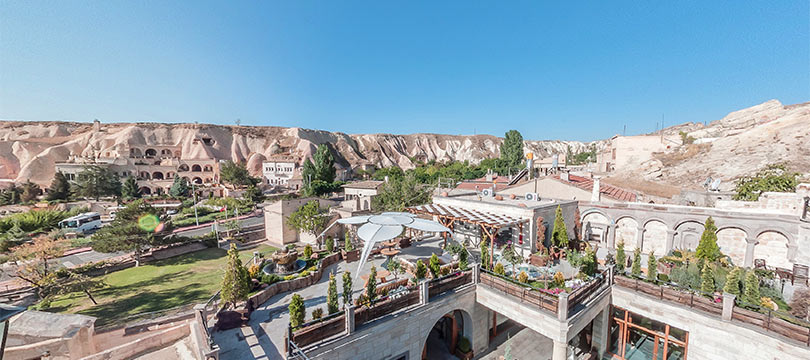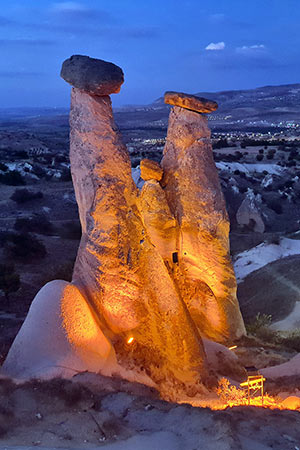Ürgüp is one of the most populated towns in Cappadocia. It is located approximately 10 kilometers (6 miles) from Göreme. The town is renowned for its vineyards and wineries.
While it may be overshadowed by its neighbor Göreme in terms of tourism, Ürgüp offers a variety of attractions to travelers, including a wide range of hotels.
As you venture into Ürgüp, the Three Beauties fairy chimneys stand as a remarkable welcome. These formations are not only a sight to behold but also a photographer’s paradise.
The most eye-catching structure in the center of Ürgüp is Temenni Hill.
This hill, which is one of the significant symbols of the district, stands at a height of 80 meters. The Kılıçarslan Gazi Mausoleum is located on the hill. Interestingly, the mausoleum is not a real tomb; it was built solely as a mark of respect.
The panoramic view from Temenni Hill is breathtaking and offers an ideal vantage point to see the magnificent view of Ürgüp.
Taşkınpaşa Madrasa, Pancarlik Church, and Hallaç Monastery are other important historical places in Ürgüp.
History of Ürgüp
The history of Ürgüp dates back to ancient times and has witnessed many different civilizations.
Ürgüp had its most prosperous years during the period of the Kingdom of Cappadocia, established by I. Ariarathes in 323 BC. During this period, nearly 30,000 people lived in Ürgüp.
When the Kingdom of Cappadocia was invaded by the Romans around 27 BC, the Cappadocia region became a province of the Roman Empire.
With the establishment of Christianity in this region, churches and chapels began to be built by Christians from around AD 53. The area became a shelter for Christians who had faced persecution in Jerusalem and Syria.
Throughout history, the town has had many names.
During the Byzantine period, it was known as Osiana (Assiana) and Hagios Prokopios (Prokopi). In the Seljuk era, it was referred to as Başhisar. Under Ottoman rule, it adopted the name Burgut Castle.
Since the early years of the Republic of Turkey, it has been called Ürgüp.
Until the Greek-Turkish population exchange in 1924, some of the population living here were Turkish and some were Greek. The Greek population migrated, leaving behind cultural heritage artifacts.

